The offshore oil and gas industry is set for unprecedented growth and innovation as we move into 2025. With advancements in technology, increased investments, and a focus on sustainability, offshore projects are becoming more complex and efficient. Among these projects, Nigeria plays a significant role, particularly in its offshore oil and gas fields. Below are the top 10 offshore oil and gas projects to watch in 2025, with a particular focus on Nigeria’s contributions to the global energy landscape.
- Zohr Gas Field Expansion – Egypt
- North Sea Clair Ridge – United Kingdom
- Liza Phase 2 – Guyana
- Bonga Southwest – Nigeria
- Egina FPSO – Nigeria
- Ogoniland – Nigeria
- Mad Dog Phase 2 – Gulf of Mexico
- Woodside’s Scarborough Project – Australia
- Arctic LNG 2 – Russia
- Troll West Expansion – Norway
- Additional Nigeria Offshore Projects:
- Bonga North – Nigeria
1. The Zohr Gas Field Expansion – Egypt
Situated in the Mediterranean Sea, Egypt’s Zohr Gas Field stands as one of the most significant natural gas discoveries of the past decade, reshaping the country’s energy landscape. Discovered in 2015, the field holds an estimated 30 trillion cubic feet (tcf) of natural gas, making it a cornerstone of Egypt’s energy strategy.
This year marks a new phase of development for Zohr, with ambitious expansion projects aimed at boosting production capacity. The plan includes the installation of additional offshore platforms, the laying of extensive subsea pipelines, and the construction of advanced onshore processing facilities. These enhancements are designed to maximize the field’s output, enabling Egypt to meet the growing domestic and international demand for natural gas.
The expansion is not only critical for Egypt’s energy independence but also positions the country as a key player in the global energy market. Increased production will contribute to Egypt’s ability to export liquefied natural gas (LNG) to Europe and other regions, especially amid global shifts toward cleaner energy sources.
Moreover, the project is expected to generate significant economic benefits, creating jobs, attracting foreign investment, and fostering technological innovation in the oil and gas sector. As the Zohr Gas Field continues to expand, it underscores Egypt’s commitment to leveraging its natural resources for long-term growth and sustainability.
2. North Sea Clair Ridge – United Kingdom
BP’s Clair Ridge project, located in the North Sea, represents one of the largest and most ambitious offshore oil field developments in the United Kingdom. The Clair Ridge field is an extension of the original Clair field, which was discovered in the 1970s but has since been revamped with cutting-edge technology to maximize its potential. When fully operational, the project is expected to produce up to 120,000 barrels of oil per day by 2025, marking a significant boost to the UK’s oil production capabilities.
The primary goal of Clair Ridge is to revitalize North Sea oil operations, an area historically known for its mature and declining oil reserves. BP has invested heavily in advanced drilling techniques, including the use of extended reach drilling and state-of-the-art subsea production systems. These innovations are designed to extract oil from some of the most challenging geological conditions in the North Sea, enhancing recovery rates and extending the life of the field.
In addition to its technological advancements, Clair Ridge will employ new floating production storage and offloading (FPSO) units to facilitate the extraction and processing of oil. These floating facilities will enable BP to work efficiently in deep waters while minimizing environmental risks.
The project is expected to significantly impact the UK’s energy landscape, contributing to the country’s oil production at a time when global demand remains high. It will also help preserve the UK’s energy security by reducing dependence on foreign oil supplies. Additionally, Clair Ridge is set to provide economic benefits through job creation, infrastructure development, and further investment in local supply chains.
Overall, the Clair Ridge project is a testament to the resilience and innovation of the North Sea oil industry, reinforcing the UK’s position as a significant player in global energy production.
3. Liza Phase 2 – Guyana
ExxonMobil’s Liza Phase 2 offshore project in Guyana is one of the most eagerly anticipated developments in the Caribbean’s oil industry, marking a significant milestone for both the company and the country. Situated in the Stabroek Block, approximately 120 miles offshore, the Liza field has already proven to be one of the largest oil discoveries in the region, and Phase 2 is set to build on this success.
Scheduled to begin production soon, Liza Phase 2 is expected to reach an output of 220,000 barrels of oil per day, contributing significantly to Guyana’s growing oil sector. This phase of the project will utilize state-of-the-art Floating Production, Storage, and Offloading (FPSO) technology, which allows for efficient extraction, processing, and storage of oil in deepwater environments. The FPSO units for the Liza Phase 2 development are among the largest of their kind, equipped with advanced processing facilities designed to optimize production and minimize environmental impact.
The Liza Phase 2 project not only bolsters Guyana’s oil production capacity but also positions the country as a rising oil hub in South America. The revenue generated from this oil production is expected to fuel economic growth, improve infrastructure, and provide greater financial stability for the nation.
Beyond economic benefits, ExxonMobil’s investment in the Liza project has led to the development of advanced offshore drilling and production technologies, increasing the efficiency and safety of offshore operations. The project also represents a model for future offshore oil ventures in the region, with Guyana now attracting global attention as an emerging energy player.
In summary, Liza Phase 2 is a game-changer for both ExxonMobil and Guyana, driving significant economic and technological advancements while solidifying the country’s position on the world energy stage.
4. Bonga Southwest – Nigeria
Shell’s Bonga Southwest project, located in the deep waters of the Gulf of Guinea, is a crucial initiative for Nigeria, which has long been one of Africa’s largest oil producers. The Bonga field, originally discovered in the late 1990s, has been a significant contributor to Nigeria’s offshore oil output, and the Southwest extension will play an integral role in bolstering this production. By 2025, Bonga Southwest is expected to add over 150,000 barrels of oil per day to Nigeria’s national production, a significant boost at a time when the country seeks to recover production lost from aging oil fields.
The Bonga Southwest development incorporates the latest in Floating Production, Storage, and Offloading (FPSO) technology, alongside new subsea systems designed to optimize oil recovery. The FPSO unit, which will be stationed offshore, is equipped with advanced processing and storage capabilities that allow for efficient extraction and transport of oil in challenging deepwater environments. These systems not only enhance recovery rates but also ensure that operations are as environmentally safe and economically viable as possible.
For Nigeria, this project is pivotal as it attempts to recover lost production from older, maturing fields while also increasing overall production capacity. In addition to improving the country’s oil output, Bonga Southwest will generate jobs, foster technology transfer, and contribute to local economic development through infrastructure projects and industry partnerships.
Bonga Southwest is also strategically important for Nigeria’s goal of maintaining its position as Africa’s top oil producer. The country has faced challenges in recent years due to the decline in output from some of its older fields, making the success of new developments like Bonga Southwest vital to the stability of the nation’s oil industry.
Overall, Shell’s Bonga Southwest project is not only crucial to Nigeria’s oil production but also serves as a demonstration of how advanced technology and investment can extend the life of offshore fields, ensuring the continued growth and competitiveness of the country’s oil sector on a global scale.
5. Egina FPSO – Nigeria
Total’s Egina project, located in the deepwater region of the Niger Delta, is a cornerstone of Nigeria’s offshore oil production. Since commencing operations in late 2018, Egina has consistently contributed to the country’s energy output, with a production capacity of approximately 200,000 barrels of oil per day. As one of the largest deepwater oil fields in Nigeria, the project remains a flagship development for TotalEnergies, showcasing the company’s commitment to leveraging cutting-edge technology for sustainable production.
The Egina project is anchored by a state-of-the-art Floating Production, Storage, and Offloading (FPSO) unit, one of the largest ever deployed in Nigeria. This FPSO is equipped with advanced processing systems and subsea technologies, enabling efficient extraction, storage, and export of oil from the challenging deepwater environment. The infrastructure also includes extensive subsea networks designed to optimize production while minimizing environmental impact.
Looking ahead to 2025, Egina is expected to continue playing a critical role in Nigeria’s energy sector. TotalEnergies has implemented strategies to maintain high production levels over the long term, including proactive maintenance of the FPSO and upgrades to subsea systems. These efforts aim to ensure sustained output, making Egina a key contributor to Nigeria’s oil exports and government revenues.
Beyond its production capacity, Egina is significant for its economic impact. The project has created thousands of jobs, driven local content development, and fostered the transfer of technology and skills to Nigeria’s workforce. It has also positioned the Niger Delta as a hub for deepwater oil exploration, attracting further investments in the region.
Egina’s success underscores Nigeria’s potential as a leader in deepwater oil production. With its robust infrastructure and advanced technologies, the project exemplifies how innovation and strategic investment can drive growth in the energy sector, securing Nigeria’s place as a key player in global energy markets for years to come.
6. Ogoniland – Nigeria
The development of oil reserves in Ogoniland represents a pivotal chapter in Nigeria’s energy story, even though it is not a new discovery. Located in the Niger Delta, Ogoniland holds significant untapped reserves that could make a substantial contribution to Nigeria’s overall oil production. Historically, this region has been underdeveloped due to environmental degradation and social challenges stemming from past oil activities. However, recent efforts by local and international stakeholders are now focused on reviving Ogoniland’s oil potential through sustainable and community-inclusive practices.
With growing investments aimed at addressing both production and restoration, the Ogoniland project is attracting increased attention. Major oil companies, in partnership with the Nigerian government and local organizations, are committing to environmentally responsible extraction techniques. These efforts include the use of advanced technologies to minimize spills and emissions, as well as rigorous cleanup initiatives to restore areas previously affected by oil-related pollution.
The revitalization of Ogoniland is expected to unlock significant economic benefits for both the local population and Nigeria as a whole. In addition to increasing national oil output, the project is poised to generate jobs, enhance local infrastructure, and drive development in one of the Niger Delta’s most historically neglected regions.
Equally important is the project’s role in fostering trust between oil companies, the government, and local communities. By prioritizing sustainability and community engagement, the development in Ogoniland has the potential to set a new standard for oil production in Nigeria, balancing economic growth with environmental and social responsibility.
As Nigeria looks to maintain its position as Africa’s largest oil producer, the successful development of Ogoniland is essential to its long-term energy strategy. Beyond boosting output, it symbolizes a shift toward more inclusive and sustainable resource management, ensuring that the benefits of oil production are shared more equitably among stakeholders while protecting the region’s fragile ecosystem.
7. Mad Dog Phase 2 – Gulf of Mexico
BP’s Mad Dog Phase 2 project in the Gulf of Mexico is a landmark deepwater exploration initiative that underscores the company’s commitment to advancing offshore oil production through innovation. As an extension of the original Mad Dog field, which began production in 2005, Phase 2 is designed to significantly enhance output by tapping into untapped reservoirs. By 2025, the project is expected to contribute an additional 140,000 barrels of oil per day, cementing its role as a flagship operation in BP’s deepwater portfolio.
At the heart of Mad Dog Phase 2 is the Argos Floating Production Unit (FPU), a state-of-the-art facility specifically designed to operate in deepwater conditions. The Argos FPU features cutting-edge subsea technologies, including advanced drilling systems and enhanced recovery techniques, to maximize efficiency and productivity. With a production capacity of up to 140,000 barrels per day, the unit represents a significant step forward in deepwater engineering, allowing BP to extract resources from complex reservoirs more effectively.
The project is strategically significant for BP as it strengthens the company’s position in the Gulf of Mexico, one of the world’s most prolific deepwater oil regions. It also demonstrates BP’s ability to leverage innovation and expertise to overcome the technical challenges associated with ultra-deepwater drilling.
Mad Dog Phase 2 brings more than just increased production; it also contributes to economic growth in the region. The project has generated thousands of jobs during its construction and will continue to provide opportunities for local communities throughout its operational life. Furthermore, it highlights BP’s commitment to environmental stewardship, with the company implementing measures to minimize the environmental impact of its operations.
In summary, Mad Dog Phase 2 is a transformative project for BP and the Gulf of Mexico. With its advanced technology and significant production capacity, it sets a new benchmark for deepwater oil exploration, reinforcing BP’s leadership in the sector while contributing to the energy security of the United States and global markets.
8. Woodside’s Scarborough Project – Australia
Woodside’s Scarborough project, located offshore Western Australia, is poised to be one of the most significant energy developments in the Asia-Pacific region. With an estimated 7 trillion cubic feet of natural gas reserves, this project represents a major boost to Australia’s energy capacity and reinforces the country’s position as a leading global exporter of liquefied natural gas (LNG).
The Scarborough project involves extracting gas from the offshore Scarborough field, situated approximately 375 kilometers west of the Burrup Peninsula. The project will feature advanced subsea tieback systems, connecting the Scarborough field directly to the onshore Pluto LNG facility via a 430-kilometer pipeline. This infrastructure enables efficient transport and processing of the gas, while also minimizing the environmental footprint typically associated with offshore developments.
The project is a cornerstone of Woodside’s growth strategy, with first production expected by 2025. Once operational, Scarborough is projected to produce around 8 million metric tonnes of LNG per year, significantly contributing to the global LNG market and meeting the rising demand for cleaner energy sources, particularly in Asia.
In addition to its economic and energy contributions, the Scarborough project emphasizes sustainability. Woodside has committed to incorporating low-emission technologies and practices, including carbon offset initiatives and energy-efficient systems, to reduce the project’s overall greenhouse gas emissions.
The Scarborough project is also expected to deliver substantial economic benefits to Australia, generating jobs, supporting local businesses, and driving regional development. The construction and operational phases will create opportunities for skilled workers and foster innovation within the country’s energy sector.
In summary, Woodside’s Scarborough project is not just a significant addition to Australia’s LNG capacity but also a testament to the country’s ability to develop its natural resources responsibly. By combining advanced technology with a commitment to sustainability, Scarborough will play a pivotal role in shaping Australia’s energy future and maintaining its status as a global leader in LNG exports.
9. Arctic LNG 2 – Russia
Russia’s Arctic LNG 2 project is a groundbreaking initiative that is set to reshape the global liquefied natural gas (LNG) market by 2025. Located on the Gydan Peninsula in the Russian Arctic, this large-scale natural gas venture is spearheaded by Novatek, with the involvement of international partners. The project aims to leverage the region’s abundant gas reserves, contributing significantly to global energy demand while solidifying Russia’s position as a key player in the global energy sector.
Arctic LNG 2 will consist of three liquefaction trains, with a combined annual capacity of 19.8 million metric tonnes of LNG. The project employs cutting-edge gravity-based structure (GBS) technology for its liquefaction platforms, a first for Russia. These massive structures are designed to withstand the harsh Arctic conditions, ensuring the safe and efficient production and export of LNG.
The strategic location of Arctic LNG 2 on the Northern Sea Route provides a logistical advantage, enabling faster delivery of LNG to key markets in Europe and Asia. This shorter shipping route reduces transportation costs and emissions, making the project more economically and environmentally competitive.
In addition to its substantial production capacity, Arctic LNG 2 is expected to have a significant economic impact, creating thousands of jobs and stimulating development in the Arctic region. The project will also foster international collaboration, with stakeholders from countries including China, Japan, and India playing critical roles in its development and financing.
Despite challenges such as the harsh Arctic climate and geopolitical tensions, Arctic LNG 2 is positioned to be a transformative project for the global LNG market. It will diversify Russia’s energy export portfolio and provide a stable supply of LNG to meet rising global demand, particularly as countries transition to cleaner energy sources.
In conclusion, Arctic LNG 2 is not just a landmark project for Russia but also a critical contributor to the evolving global energy landscape. Its advanced technology, strategic location, and vast production capacity underscore its importance in addressing the world’s growing energy needs while reinforcing Russia’s dominance in the energy sector.
10. Troll West Expansion – Norway
Norway’s Troll West Expansion project is a critical initiative aimed at bolstering natural gas production from the Troll field, one of the largest gas reserves in the North Sea. This expansion underscores Norway’s commitment to maintaining its position as a leading supplier of natural gas to Europe, especially at a time when energy security is a top priority for the region.
The Troll West Expansion focuses on optimizing gas recovery through advanced subsea processing technologies. These technologies are designed to enhance production efficiency and maximize resource extraction while minimizing environmental impact. By extending the operational life of the Troll field, the project ensures a steady and reliable supply of natural gas, which is vital for meeting Europe’s growing energy demand.
Once operational, the Troll West Expansion will significantly boost Norway’s gas export capacity, providing a critical energy lifeline for European markets. The project aligns with Norway’s long-term energy strategy, which emphasizes the responsible and sustainable development of its natural resources.
In addition to its energy contributions, the Troll West Expansion brings economic benefits, including job creation and technological innovation. The project supports Norway’s offshore industry by driving advancements in subsea technology, which can be applied to other fields in the future.
With its focus on sustainability and efficiency, the Troll West Expansion exemplifies Norway’s leadership in the energy sector. The project not only reinforces the country’s role as a dependable energy partner for Europe but also highlights its ability to balance economic growth with environmental stewardship.
In summary, the Troll West Expansion is a cornerstone project for Norway, ensuring the continued supply of natural gas to Europe while advancing the use of cutting-edge technologies to meet global energy needs in a sustainable manner.
Nigeria’s Offshore Oil and Gas Projects to Watch
1. Bonga Southwest – Nigeria
Shell’s Bonga Southwest project, situated in the deep waters of the Gulf of Guinea, is poised to be a vital contributor to Nigeria’s oil production, with an expected output of over 150,000 barrels per day by 2025. This expansion is critical for maintaining Nigeria’s offshore oil output as the country seeks to boost production and regain its leading position in Africa’s energy sector.
The project leverages advanced Floating Production, Storage, and Offloading (FPSO) technologies, which allow for efficient oil recovery from deepwater fields. These state-of-the-art FPSO systems not only optimize extraction but also ensure flexibility in processing and storage, making them well-suited for the challenging offshore environment.
Bonga Southwest is also integral to Nigeria’s strategy of offsetting declines from aging oil fields while securing its role as a major global oil producer. Beyond production, the project is expected to deliver significant economic benefits, including job creation, technological transfer, and contributions to the local economy through infrastructure development and partnerships.
In summary, Shell’s Bonga Southwest project is a cornerstone for Nigeria’s energy future, combining cutting-edge technology with strategic investments to sustain and grow the country’s oil production capacity.
2. Egina FPSO – Nigeria
TotalEnergies’ Egina project is among Nigeria’s most significant and ambitious offshore oil developments. Located in the deepwater Niger Delta, Egina has a production capacity of approximately 200,000 barrels per day, making it a key driver of Nigeria’s offshore oil production. Since commencing operations in late 2018, the project has solidified its role as a cornerstone of TotalEnergies’ operations in the region.
The Egina project utilizes a state-of-the-art Floating Production, Storage, and Offloading (FPSO) unit, one of the largest of its kind deployed in Nigeria. This FPSO is equipped with cutting-edge subsea technologies that optimize oil extraction, processing, and storage, ensuring maximum efficiency and minimal environmental impact.
As Nigeria continues to focus on maintaining and increasing its oil production, Egina remains central to the country’s energy strategy. By 2025, it is expected to sustain its contribution to Nigeria’s oil exports, reinforcing the nation’s position as a leading oil producer in Africa. The project also emphasizes technological innovation, local capacity building, and sustainable practices, ensuring long-term benefits for the Nigerian economy and its workforce.
Egina not only exemplifies advanced engineering and operational excellence but also highlights TotalEnergies’ commitment to responsible energy development in Nigeria. The project plays a critical role in driving economic growth, supporting local industries, and ensuring the continued relevance of Nigeria in the global energy market.
3. Ogoniland – Nigeria
The Ogoniland oil field, located in the Niger Delta, has historically been an underdeveloped asset in Nigeria’s energy portfolio, largely due to environmental degradation and social challenges stemming from past oil activities. However, renewed investments and a strong emphasis on sustainability are now transforming Ogoniland into a promising area for offshore oil production. By 2025, the field is expected to make a substantial contribution to Nigeria’s oil output, unlocking its long-dormant potential.
Ogoniland is receiving significant attention from both local and international stakeholders, with efforts centered on sustainable and community-inclusive approaches. Investments are focused on implementing environmentally responsible extraction technologies and rigorous cleanup initiatives to address historical pollution. These efforts aim to rebuild trust with local communities while ensuring that oil production is carried out in an environmentally friendly and socially responsible manner.
The development of Ogoniland is expected to yield significant economic benefits, including job creation, infrastructure development, and increased revenue for both local and national economies. As global demand for energy rises, tapping into the Ogoniland reserves provides Nigeria with an opportunity to strengthen its position as a leading oil producer in Africa.
Furthermore, the success of Ogoniland’s revitalization could serve as a blueprint for balancing resource extraction with environmental and social priorities in other oil-producing regions. This project symbolizes a shift toward a more sustainable and equitable model of energy development, where the benefits are shared with local communities and the environmental impact is minimized.
In summary, Ogoniland represents a key element in Nigeria’s energy strategy. With its enormous growth potential and increasing global attention, the field is poised to play a vital role in the country’s offshore oil production, contributing to economic development and energy security while setting new standards for sustainability in the sector.
4. Bonga North – Nigeria
Bonga North, an extension of Shell’s Bonga field located in the deep waters of the Gulf of Guinea, is a key project aimed at enhancing Nigeria’s offshore oil production. Scheduled to become operational by 2025, Bonga North is expected to contribute significantly to the country’s oil output while reinforcing Shell’s commitment to optimizing Nigeria’s offshore resources.
This project focuses on leveraging advanced subsea systems and state-of-the-art processing technologies to maximize production from existing fields. By improving recovery rates and operational efficiency, Bonga North will help sustain long-term production while reducing the environmental footprint of offshore operations.
Bonga North represents a significant investment in Nigeria’s energy sector, bringing both economic and technological benefits. The project will create job opportunities, support local businesses, and drive innovation within the oil and gas industry. Furthermore, it highlights the importance of extending the life of mature fields, ensuring that Nigeria continues to benefit from its offshore reserves for years to come.
As part of Nigeria’s broader energy strategy, Bonga North will play a critical role in maintaining the country’s position as a leading oil producer in Africa. The project underscores Shell’s expertise in deepwater operations and its dedication to supporting Nigeria’s economic development through responsible and sustainable energy projects.
In summary, Bonga North is a vital extension of Shell’s offshore portfolio, offering enhanced production capabilities, technological innovation, and long-term sustainability. This project is not only a testament to Nigeria’s vast energy potential but also a strategic effort to optimize and sustain its oil production for future generations.
Conclusion
Nigeria’s offshore oil and gas projects are positioned to play a significant role in the global energy landscape. From Bonga Southwest to Egina FPSO, these developments not only represent substantial technological advancements but also the resilience and innovation needed to overcome the challenges of offshore exploration. The global energy sector’s future will undoubtedly be shaped by these projects, and Nigeria will continue to be a central player in this dynamic industry.
To stay informed and gain exclusive insights into Nigeria’s offshore projects and the global energy market, sign up for our newsletter today! Get the latest updates, expert analysis, and in-depth reports on the most exciting developments in the offshore oil and gas industry. Don’t miss out—subscribe now!
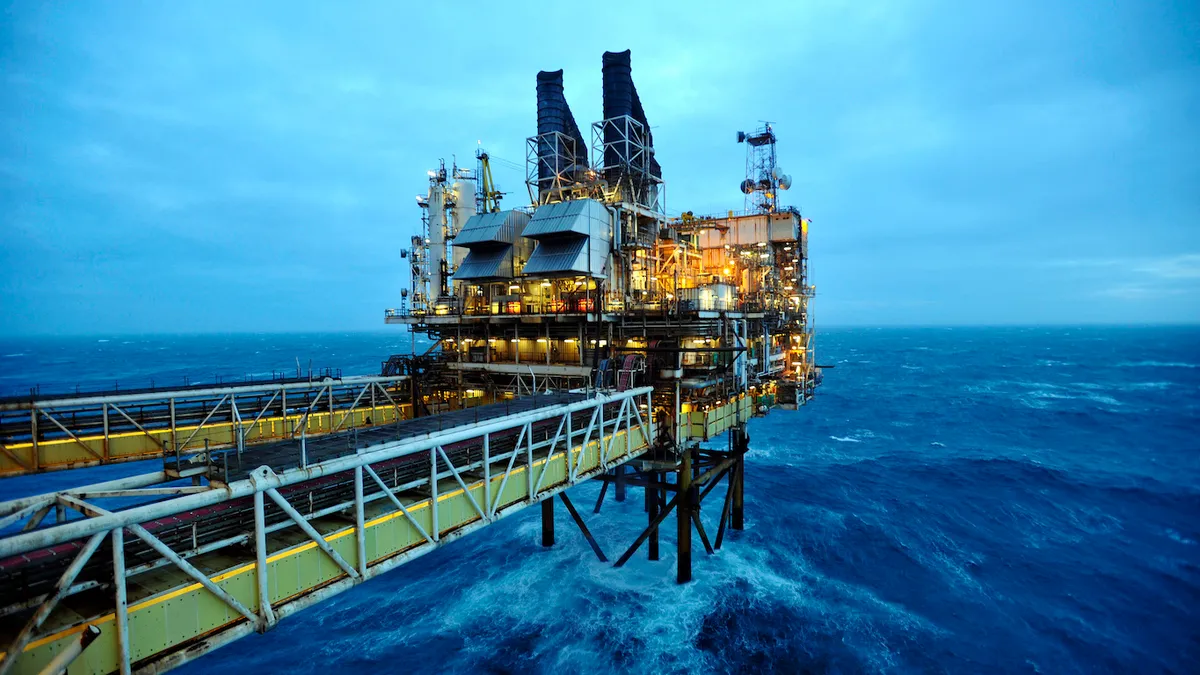
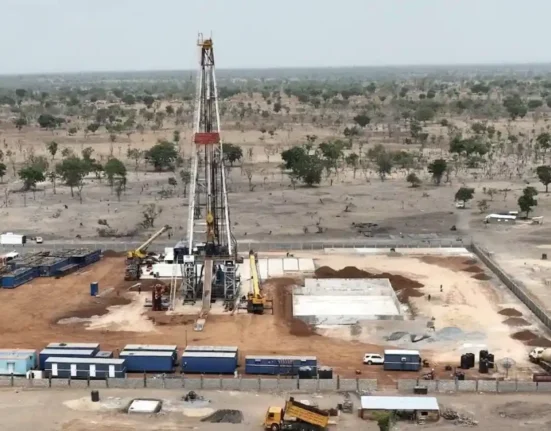

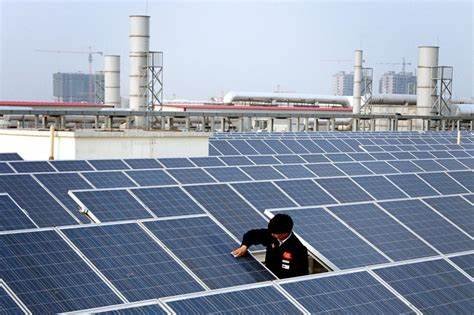
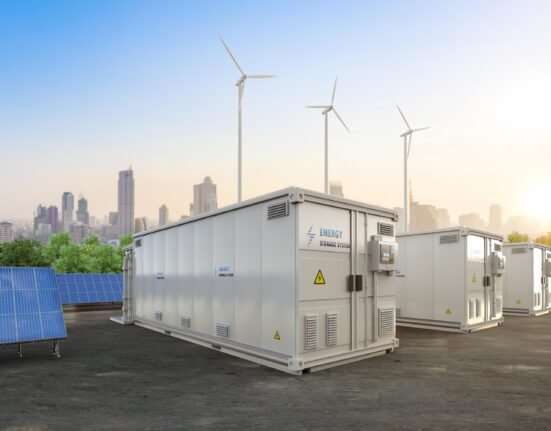
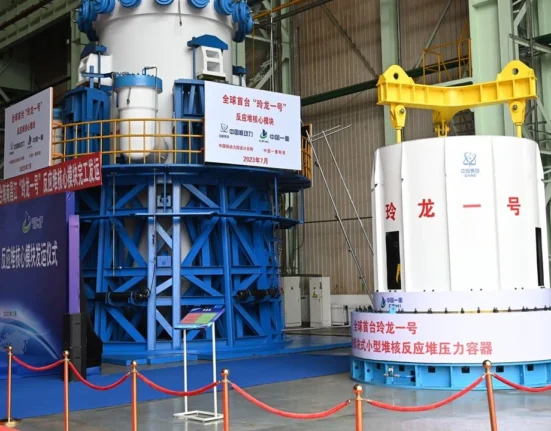

Leave feedback about this